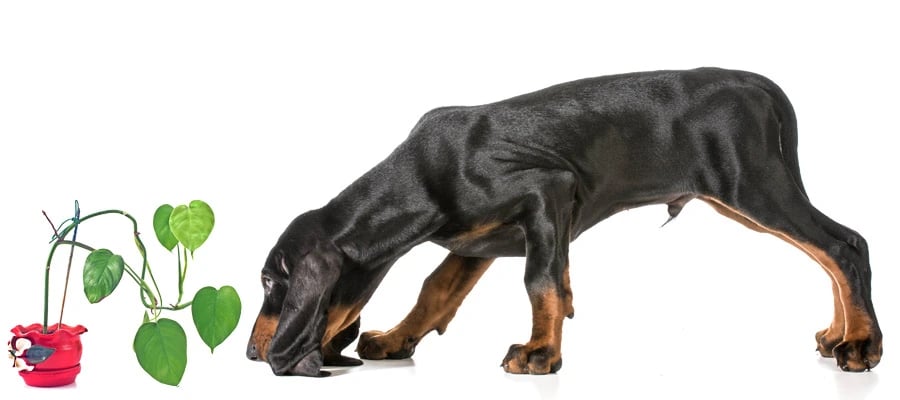Before bringing home a new pet, you probably looked around your house before you brought your furry friend home and pet-proofed. Maybe you read about the best ways to keep puppies and kitties out of your human food, what to keep out of reach, and how to keep Fido or fluffy from chewing up your beautiful leather shoes. By all accounts, your dog and cat should be safe, happy, and comfortable in your home. But did you consider the toxicity level of your houseplants in the process?
Many pet owners think that their homes are safe for their dogs and cats, but in reality, many keep a popular house plant within reach of their canine and feline companions that could be deadly. This plant is called Philodendron.
The Dangers of Philodendron
Even though dogs and cats are primarily carnivores, they're also curious animals that like to nibble on plants occasionally. You've probably seen your dog grabbing a mouthful of grass in the backyard and tasting a weed every once in a while. There's always a chance that your pet will try out a house plant—or even make a meal of it—and in the case of Philodendron ingestion, this could be fatal.
What is Philodendron?
Philodendron is a popular climbing house plant that sports attractive, smooth, shiny leaves. Some varieties have broad, long, split leaves, while others have tear-dropped-shaped foliage. These plants are often set on coffee tables and shelves where they spill out attractively. They do well indoors and are hardy, adding to the many reasons that homeowners bring them inside the house for decorative purposes. This plant is in many homes, and also goes by the names:
- Horsehead philodendron
- Cordatum
- Fiddle leaf
- Panda plant
- Split-leaf philodendron
- Fruit salad plant
- Red emerald
- Red princess
- Saddle leaf
What Are the Symptoms?
Philodendron is poisonous to dogs, and any ingestion is cause for an immediate call to your vet. If a dog ingests a significant amount of philodendron, they could experience severe respiratory and digestive issues that could be fatal.
The first symptom that your dog could experience after eating philodendron is a severe burning sensation. This will likely mean agitation, pawing at the face and mouth, drooling, foaming, and coughing. If your dog appears to be having trouble swallowing, seems to be choking, or is pawing at his or her mouth, it's time for an emergency trip to the vet.
What Happens with Philodendron Poisoning?
Philodendrons cause severe reactions in dogs, and the initial symptoms of difficulty swallowing and breathing will only intensify if a dog has ingested a significant amount. The result of Philodendron poisoning can be convulsions, renal failure, and coma. Never wait to call your vet if you believe that your dog has ingested philodendron.
First Aid and Action Steps
You should immediately contact your veterinarian if you believe that your dog has eaten a Philodendron plant. If you attempt first aid at home, start with flushing your dog's mouth out with water and giving her a source the contains calcium. When you call your vet, ask about administering an antihistamine to keep swelling down in less severe cases. In most instances, your pet healthcare professional will want to examine your dog to be on the safe side.
Prevention
An ounce of prevention is worth a pound of cure, so it's worthwhile to consider how to keep your dog safe. You could opt to have no Philodendron in your house or to hang the plant from the ceiling. Always check homes that you're visiting or when someone watches your dog for signs of toxic plants like a philodendron.
For more information about plant poisoning and answers to your other dog care questions, check out our When Plants and Pets Don't Mix ebook

